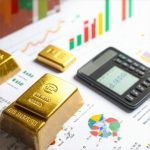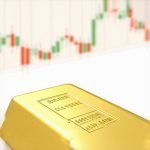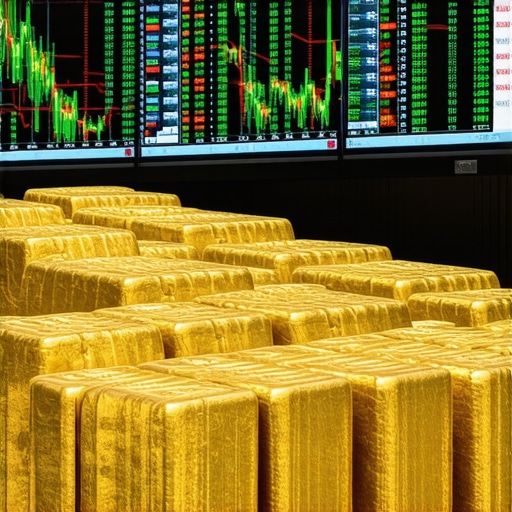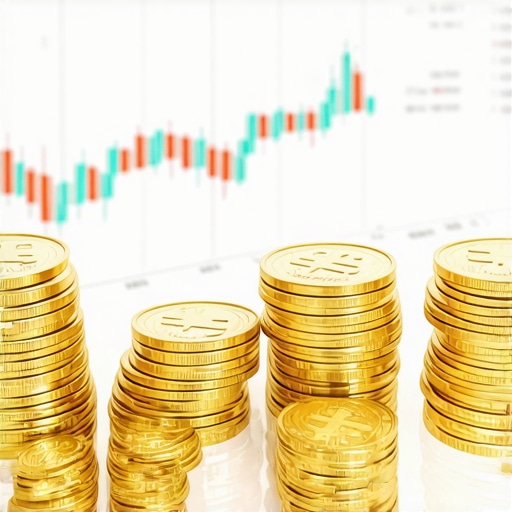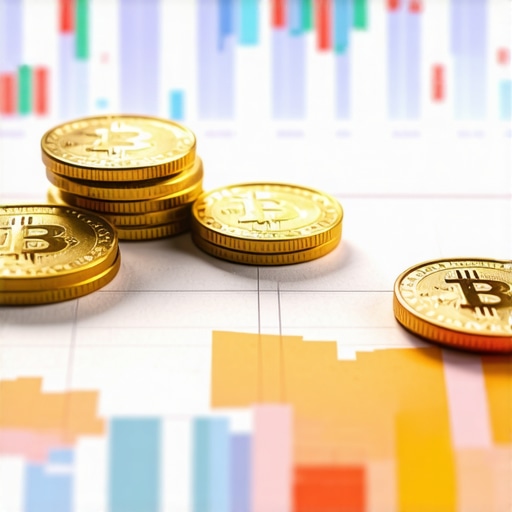Deciphering the 2025 Gold Market: An Expert’s Perspective on Emerging Demand Dynamics
The global gold market stands at a pivotal juncture as 2025 approaches, driven by an intricate web of macroeconomic forces, geopolitical tensions, and evolving investment paradigms. As seasoned analysts, we recognize that understanding the nuanced demand trends for gold involves examining supply chain disruptions, central bank policies, and shifting consumer behaviors. This comprehensive analysis aims to equip investors and industry stakeholders with a strategic outlook rooted in deep market insights.
How Will Technological Innovation Influence Gold Demand in 2025?
One of the most compelling factors shaping the future of gold demand is technological advancement. From the proliferation of gold-backed cryptocurrencies to blockchain-based traceability systems, technological innovation is redefining asset security and liquidity. Experts predict that increased adoption of digital gold solutions could bolster demand among younger investors seeking alternative assets, thereby influencing price trajectories. For a detailed exploration of these trends, consult our market analysis report.
The Role of Central Banks and Sovereign Wealth Funds in 2025
Central banks continue to be pivotal in shaping gold prices, especially through their gold reserve management strategies. As noted by the World Gold Council, central banks are expected to maintain or even increase their gold holdings in response to geopolitical uncertainties and inflationary pressures. Such moves can significantly impact supply-demand dynamics, creating upward pressure on prices. Understanding these institutional behaviors provides a strategic advantage for investors aiming to anticipate market shifts.
What Are the Key Challenges in Forecasting Gold Prices Amid Global Economic Volatility?
Forecasting gold prices in 2025 involves navigating complex variables, including currency fluctuations, inflation rates, and geopolitical developments. The inherent unpredictability of these factors poses challenges for even seasoned analysts. To mitigate risks, investors must analyze multiple scenarios and diversify their holdings accordingly. For more on effective strategies, see our trading techniques guide.
As the landscape evolves, it’s vital to stay informed through reputable sources such as the World Gold Council, which provides authoritative insights into supply-demand fundamentals and market forecasts.
Explore Further: Building a Resilient Gold Investment Portfolio
Given the emerging demand trends and market uncertainties, constructing a resilient portfolio requires a strategic blend of physical gold, ETFs, and mining stocks. Diversification not only mitigates risks but also captures various growth opportunities within the gold sector. To deepen your understanding, consider our gold IRA development strategies.
Harnessing Emerging Technologies to Revolutionize Gold Investment Strategies in 2025
The rapid evolution of financial technologies is transforming how investors perceive and utilize gold as an asset class. From blockchain-enabled traceability systems that ensure authenticity to gold-backed cryptocurrencies offering liquidity and fractional ownership, the landscape is becoming increasingly sophisticated. Experts suggest that embracing these innovations can provide a competitive edge, especially for those looking to diversify their portfolios effectively. To explore the latest trends and practical applications, review our market analysis report that delves into digital gold solutions and their impact on demand dynamics.
The Strategic Role of Central Banks in Shaping 2025 Gold Prices
Central banks remain influential players in the global gold market, often acting as both customers and regulators. Their reserve management strategies, especially in response to geopolitical tensions and economic uncertainties, can significantly influence supply and demand. According to the World Gold Council, numerous central banks are expected to continue or expand their gold holdings to hedge against currency devaluation and inflation. This institutional behavior not only stabilizes gold’s role as a safe haven but also creates strategic opportunities for investors who monitor these reserve adjustments closely. For a comprehensive understanding of central bank behaviors, see our guide on central bank gold purchases.
What Are the Most Effective Tools for Analyzing Gold Market Volatility in 2025?
Analyzing gold market volatility in 2025 requires sophisticated tools that incorporate macroeconomic indicators, geopolitical risk assessments, and technical analysis techniques. Advanced models such as the VIX index for market sentiment, combined with real-time data analytics, can help investors anticipate short-term price swings. Moreover, integrating macroeconomic forecasts, including inflation rates and currency trends, provides a nuanced view of potential price movements. For a detailed overview of these analytical frameworks, explore our expert guide on gold trading tools.
Innovative Approaches to Gold Hedging in an Unpredictable Economic Landscape
As we venture further into 2025, the complexity of the global economic environment necessitates sophisticated hedging techniques to mitigate risks associated with gold investments. Traditional methods, such as physical bullion and ETFs, are now complemented by emerging financial instruments like gold derivatives and options strategies. These tools allow investors to fine-tune their exposure, hedge against volatility, and capitalize on short-term price movements. For instance, options on gold futures can serve as insurance policies during geopolitical upheavals, while structured products offer tailored risk-return profiles. An in-depth understanding of these instruments can significantly enhance portfolio resilience amid economic turbulence.
Deciphering the Impact of Cryptocurrency Innovation on Gold’s Safe-Haven Status
One of the most intriguing developments influencing gold demand is the rise of digital assets, particularly gold-backed cryptocurrencies. These innovations challenge traditional notions of gold as a physical store of value, offering increased liquidity, fractional ownership, and seamless cross-border transactions. According to a detailed report by the World Gold Council, the integration of blockchain technology enhances transparency and traceability, thereby reinforcing gold’s appeal among tech-savvy investors. However, the regulatory landscape remains fluid, posing both risks and opportunities for market participants seeking to leverage these digital assets effectively.
What are the implications of blockchain-enabled gold trading for institutional investors?
This question addresses the transformative potential of blockchain technology in institutional gold trading, emphasizing efficiency, security, and market integrity. Blockchain could streamline settlement processes, reduce counterparty risk, and enable real-time auditing, thus attracting larger institutional participation. Moreover, the transparency offered by blockchain can help address concerns related to provenance and authenticity, which are critical in high-value transactions. As such, institutional investors should consider integrating blockchain-based platforms into their trading infrastructure to gain a competitive edge and improve operational efficiencies.
For those aiming to deepen their expertise, consulting authoritative sources like the World Gold Council’s research publications can provide valuable insights into technological innovations and their strategic implications in gold markets.
Leveraging Data Analytics and AI for Predictive Market Modeling in Gold Investments
The advent of big data and artificial intelligence has revolutionized how analysts forecast gold price movements. Advanced algorithms can now process vast datasets encompassing macroeconomic indicators, geopolitical developments, and market sentiment, generating predictive models with unprecedented accuracy. Techniques such as machine learning, neural networks, and sentiment analysis enable a nuanced understanding of market dynamics, allowing investors to anticipate volatility and identify entry or exit points with greater confidence. For example, integrating AI-driven sentiment analysis from social media platforms can reveal early signals of market shifts, providing a strategic advantage.
To harness these technologies effectively, investors should consider subscribing to specialized analytics platforms and collaborating with data scientists who can tailor models to specific risk profiles and investment horizons. The continuous evolution of AI in financial markets underscores the importance of staying abreast of technological advancements and integrating them into comprehensive investment strategies.
Exploring Sustainable and Ethical Gold Investment Opportunities in 2025
As environmental and social governance (ESG) considerations become increasingly central to investment decisions, gold investors are turning toward sustainable sourcing and ethical practices. Initiatives such as the Responsible Gold Mining Principles (RGMP) and certifications like the Fairmined label are gaining prominence, ensuring that gold is mined with minimal environmental impact and fair labor standards. These factors not only align with broader societal values but also influence demand, particularly among institutional investors prioritizing ESG criteria.
Incorporating sustainable gold options into portfolios requires a nuanced understanding of certification standards, supply chain transparency, and market premiums. Engaging with reputable suppliers and leveraging third-party audits can help investors align their holdings with ethical principles while potentially benefiting from premium valuations driven by ESG-conscious demand.
To further explore the intersection of sustainability and gold investment, consult reports from organizations like the World Gold Council and industry leaders committed to responsible sourcing. Embracing these approaches not only enhances portfolio resilience but also contributes to a more sustainable global economy.
Unveiling Blockchain Disruptions: How Decentralized Ledger Technologies Are Reshaping Gold Trading
The integration of blockchain technology into gold trading platforms is revolutionizing transparency, security, and settlement efficiency. By enabling immutable records and real-time verification, decentralized ledgers are reducing counterparty fraud and streamlining cross-border transactions. According to a comprehensive report by the World Gold Council, this technological leap not only enhances trust but also attracts institutional capital seeking reliable, tamper-proof trading mechanisms. As the industry adopts smart contracts and tokenization, understanding these innovations becomes crucial for strategic positioning in 2025.
The Ecological Paradigm Shift: How Sustainable Mining Networks Are Influencing Gold Demand
Environmental stewardship and social responsibility are no longer optional; they are prerequisites for market participation. Companies adhering to rigorous standards such as the Responsible Gold Mining Principles (RGMP) are gaining competitive advantages, driven by rising ESG investor mandates. These responsible practices result in supply chain transparency and reduced ecological footprints, driving demand among conscious consumers and institutional investors alike. Exploring certifications like Fairmined and initiatives promoting low-impact mining can unlock premium valuations and foster long-term sustainability.
What Are the Cutting-Edge Techniques for Analyzing Gold Market Sentiment in 2025?
Advanced sentiment analysis leveraging AI-driven natural language processing (NLP) tools is now vital for parsing social media chatter, news sentiment, and geopolitical signals. Integrating these data streams with traditional macroeconomic indicators allows for more precise short-term forecasting of gold price fluctuations. Platforms that combine machine learning algorithms with real-time data analytics enable investors to detect early warning signs of market shifts, providing a decisive edge in volatile environments. For an in-depth review, visit our expert guide on gold market analytics.
How Can Investors Leverage AI to Optimize Gold Portfolio Diversification?
Artificial intelligence offers powerful tools for constructing resilient gold investment portfolios. Machine learning models can simulate myriad market scenarios, optimizing asset allocations across physical holdings, ETFs, and mining stocks. AI-driven predictive analytics can identify undervalued assets and forecast price trajectories with high precision, enabling dynamic rebalancing strategies. Collaborating with data science teams or subscribing to sophisticated analytics platforms can transform traditional portfolio management into an adaptive, intelligence-driven process that maximizes risk-adjusted returns in 2025 and beyond.
What Future Trends Will Define Gold’s Role in the Digital Economy?
The proliferation of digital assets such as gold-backed cryptocurrencies is poised to redefine gold’s function as a safe haven and liquidity vehicle. Innovations like tokenized gold allow fractional ownership, seamless cross-border transfers, and integration into decentralized finance (DeFi) ecosystems. A recent study by the World Gold Council emphasizes that these digital instruments will complement physical gold, expanding its accessibility and appeal among digital-native investors. Understanding regulatory developments and technological advancements in this niche is vital for strategic positioning in 2025.
How Will Regulatory Frameworks Evolve to Address Digital Gold and Crypto-Backed Assets?
Regulatory landscapes are rapidly adapting to encompass digital gold and crypto-backed financial instruments. Policymakers are balancing innovation with investor protection, leading to clearer guidelines on custody, anti-money laundering, and cross-border trading. Staying abreast of these developments, through authoritative sources like the World Gold Council, is essential for navigating compliance and capitalizing on emerging opportunities. Proactively engaging with regulatory trends can mitigate risks and position investors advantageously in this evolving market.
Engaging with these advanced insights equips industry leaders and sophisticated investors with the knowledge necessary to thrive in the complex, dynamic gold market of 2025. For tailored strategies and in-depth analysis, consider consulting expert resources and leveraging cutting-edge technological tools.
Expert Insights & Advanced Considerations
1. Diversify with Digital Gold Assets
As technological innovation accelerates, integrating digital gold solutions like blockchain-based tokens and cryptocurrencies backed by gold can enhance portfolio flexibility and security. These assets offer fractional ownership and seamless cross-border transactions, making them a strategic addition in 2025.
2. Monitor Central Bank Reserve Strategies
Central banks are expected to continue increasing or maintaining their gold reserves as a hedge against inflation and geopolitical risks. Analyzing reserve adjustments provides a strategic edge in anticipating market shifts and price movements.
3. Leverage AI for Market Sentiment Analysis
Advanced AI-driven sentiment analysis tools can interpret social media, news, and geopolitical signals, enabling more accurate short-term gold price forecasts. Incorporating these insights is vital for sophisticated investors seeking an edge in volatile markets.
4. Embrace Sustainable Gold Investment
Investing in gold sourced from responsible mining operations certified by standards like RGMP and Fairmined aligns with ESG principles. Such investments are increasingly favored by institutional investors, influencing demand and premiums in 2025.
5. Utilize Blockchain for Transparent Trading
Blockchain-enabled platforms are transforming gold trading by ensuring transparency, reducing settlement times, and improving security. Institutional adoption of smart contracts and tokenization is expected to rise significantly, reshaping market dynamics.
Curated Expert Resources
- World Gold Council: Provides authoritative research, market analysis, and insights into supply-demand fundamentals and technological developments affecting gold.
- Gold.org: Offers comprehensive reports on gold demand trends, including ESG and digital asset integration, crucial for strategic planning.
- Financial Analytics Platforms: Tools like Bloomberg Terminal and Refinitiv Eikon offer real-time data analytics, sentiment analysis, and macroeconomic forecasting essential for high-level investment decisions.
- Academic and Industry Publications: Journals such as the Journal of Gold Markets and industry white papers provide in-depth technical analysis and innovative strategies for 2025.
Final Expert Perspective
Understanding the evolving landscape of the 2025 gold market requires a synthesis of technological innovation, institutional behavior, and advanced analytics. Embracing digital assets, monitoring central bank strategies, and leveraging AI-driven insights will empower investors to navigate uncertainties effectively. Staying informed through authoritative sources like the World Gold Council and integrating cutting-edge tools will be critical for strategic success. For those committed to excellence in gold investment, engaging with these insights and resources is indispensable to achieving optimal outcomes in 2025 and beyond. To deepen your expertise, explore our comprehensive guides and analysis.




